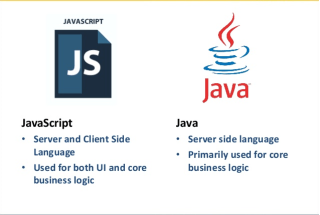Java and JavaScript are both widely-used programming languages, but they are not the same thing. Understanding the differences between the two is important for developers, as it will help them make informed decisions about which language to use for a given project. In this article, we will take a deeper look at the similarities and differences between Java and JavaScript, as well as the use cases of each language.
Java is a general-purpose, object-oriented programming language that was first released in 1995. It is designed to be platform-independent, meaning that it can run on any operating system that has a Java Virtual Machine (JVM) installed. Java is often used for building enterprise-level applications such as Android mobile apps and enterprise software, as well as for scientific computing, big data, and artificial intelligence applications.
JavaScript, on the other hand, is a scripting language that was first released in 1995 as well. It was primarily designed to be used for creating interactive front-end web applications. JavaScript code runs on the browser or Node.js (JavaScript runtime) and it is interpreted, unlike Java which is compiled. JavaScript can be used for a variety of purposes, such as creating interactive user interfaces and dynamic web pages, as well as for server-side programming with the use of Node.js.
| Java | JavaScript |
|---|---|
| General-purpose, object-oriented programming language | Scripting language primarily used for front-end web development |
| Compiled language | Interpreted language |
| Runs on the Java Virtual Machine (JVM) | Runs on the browser or Node.js (JavaScript runtime) |
| Used for building enterprise-level applications such as Android mobile apps and enterprise software | Used for creating interactive user interfaces and dynamic web pages |
One of the most significant differences between Java and JavaScript is that Java is a compiled language, while JavaScript is an interpreted language. This means that Java code is translated into machine code before it is executed, while JavaScript code is executed directly by the browser or JavaScript runtime. This difference can affect the performance and overall behavior of the code.
Another key difference is that Java is a more powerful and feature-rich language, while JavaScript is generally easier to learn and use for simple tasks. Java has a large set of libraries and frameworks, and it is a mature language that has been around for over 25 years, while JavaScript is a relatively newer language and it is still evolving.
In terms of popularity, both languages are widely used. Java is considered more stable and mature language, it is used for a wide range of applications and it is supported by a large community of developers. However, JavaScript is growing in popularity with the rise of front-end JavaScript libraries and frameworks such as React and Angular.
In conclusion, both Java and JavaScript are powerful programming languages with their own unique strengths and use cases. Java is a general-purpose, object-oriented language that is often used for building enterprise-level applications, while JavaScript is a scripting language that is primarily used for creating interactive front-end web applications. Understanding the differences between the two languages is essential for developers, as it will help them make informed decisions about which language to use for a given project.
Keywords: Java, JavaScript, programming languages, web development, front-end development, enterprise-level applications, object-oriented, interpreted, compiled, Java Virtual Machine (JVM), Node.js, performance, libraries and frameworks, popularity, maturity, features, community.

